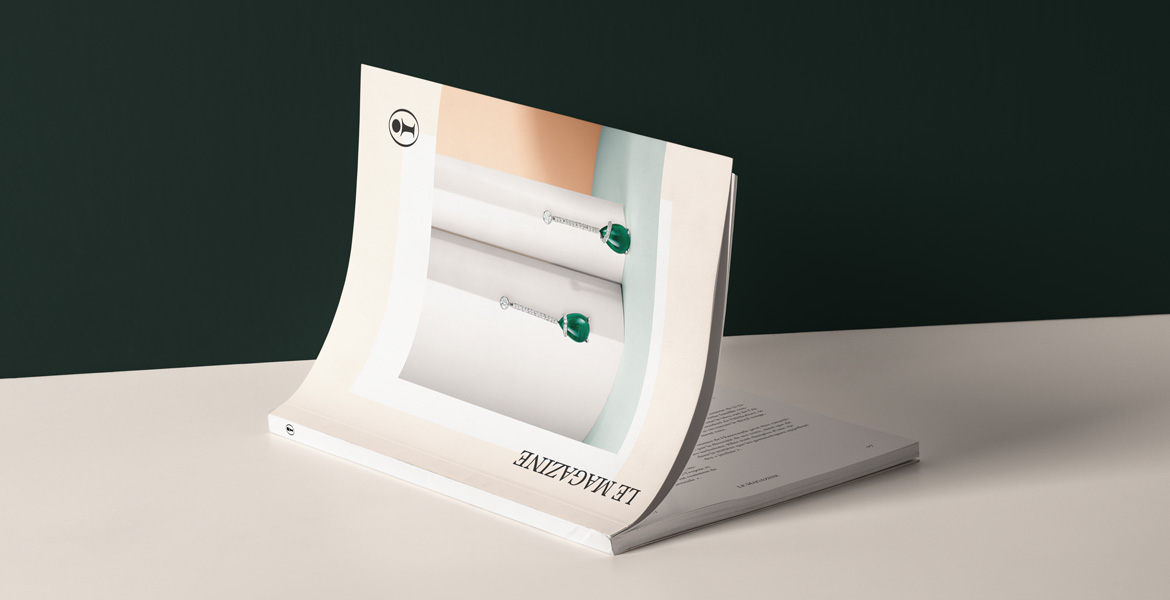The Diamond
Diamond Universal gem symbol of purity and indestructible links, Diamonds are naturally chosen to mark meaningful moments of our lives. The word “Diamond” comes from the Greek word “Adamas” meaning “indomitable”. It is indeed a robust gem. It is not unbreakable but its resistance to abrasion is such that only a Diamond can scratch another Diamond.
The creation of Diamonds.
The History of a Diamond begins deep down within the globe at extreme temperature and pressure. Several hundred million of years are necessary for a Diamond to crystallize. The oldest are between 3,3 and 3,5 billion of years old (the Earth itself is 4,5 billion years old). They are carried to the surface within a magma called kimberlite. Its low viscosity and ascending speed of 4 to 20 meters per second are characteristics and help the kimberlite to keep the Diamonds whole and to not be deteriorated by pressure and temperature variations. As cooling near the surface, the magma forms dykes. These dykes are the mines containing the precious Diamonds of today. The main deposits are located in Botswana, South Africa, Canada, Australia and Russia.
 Diamond in a kimberlite from Canada, by R.Weldon GIA.
Diamond in a kimberlite from Canada, by R.Weldon GIA.
Talking about Russian deposits, their story is particularly unusual. 35,7 million of years ago, the formidable power of the impact of a meteorite on the current Siberia, as well as the richness of the soil in carbon, provide the ideal conditions to form Diamonds.
 Udachnaya Diamond mine Open-pit (Russia) belonging to the Alrosa company by A.Stepanov.
Udachnaya Diamond mine Open-pit (Russia) belonging to the Alrosa company by A.Stepanov.
The international Diamond stock exchange
Nowadays, Antwerp remains one of the main international trading places for cut Diamonds. The first flows appeared in 1886. The city will only acquire its worldwide position in 1904 followed by New-York in 1931, Tel-Aviv in 1937 and Mumbai (formerly Bombay) in 2012.
 INEDIT Creation “Art Déco” Ring 2 carats Step Cut Diamond.
INEDIT Creation “Art Déco” Ring 2 carats Step Cut Diamond.
The price of a Diamond is regulated by the international gradation system of the 4Cs: Carat, Cut, Colour, Clarity. It was created in 1940 by the director of the gemmological Institute of America, Robert M.Shipley. This laboratory is recognized worldwide for the gradation of Diamonds. This is why every Diamond we propose you is accompanied by a gemmological certificate from this laboratory.
At Inédit, we pay particular attention to the selection of each of our Diamonds. We are highly demanding regarding the quality of the colour, only from D (Exceptional White +) to F (Extra White +). The clarity of the stones we propose are Pure (without inclusion) to VS (Very Small inclusions invisible to the naked eye and hardly visible with magnification 10 times). Finally, the quality of the cut, meaning the respect of geometrical proportions, the perfect alignment of facets and the polish, are extremely important in the process of selecting a Diamond as its shine entirely depends on the balance of these three criteria. They are clearly mentioned on a gemmological report. They must be either “Perfect” or “Very Good” for the Diamond to be selected. The modern brilliant shape is nowadays the best way to enhance the brilliance of a Diamond. It is composed of 57 facets and was created by Marcel Tolkowsky in 1919.

To go further…
Diamond is not exclusively colourless. It can adorn every colour of the rainbow. Some of them are highly prised and can reach prices far more expensive than colourless Diamonds. Deserving a deeper development, the story of coloured Diamonds will be discussed in a next article. To be followed …
 INEDIT Creation, Solitaire Médicis 8 carats cognac Diamond pear
INEDIT Creation, Solitaire Médicis 8 carats cognac Diamond pear























